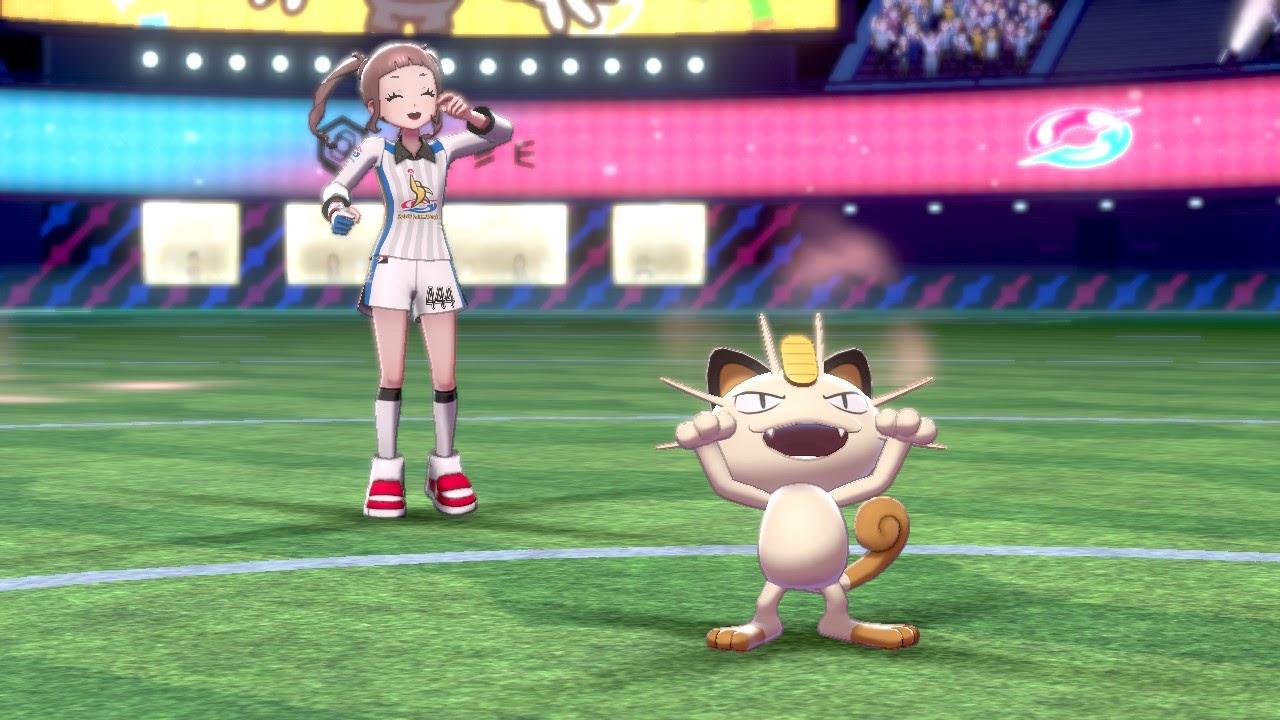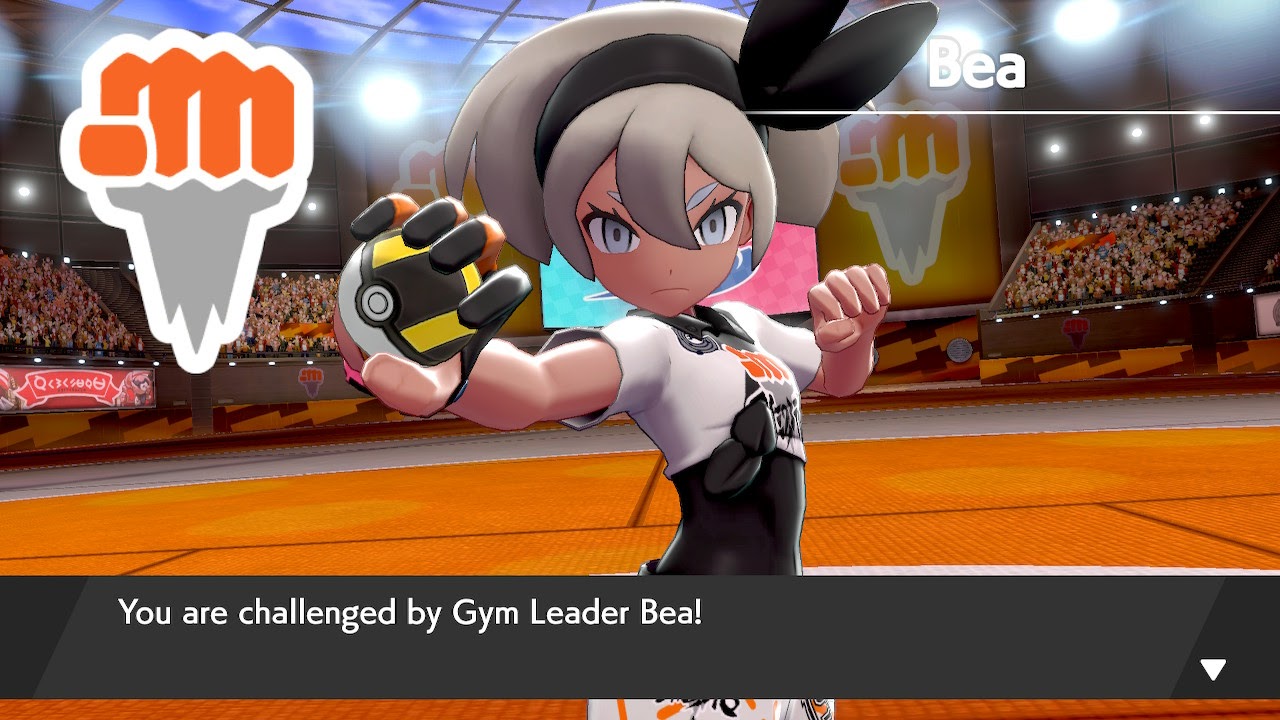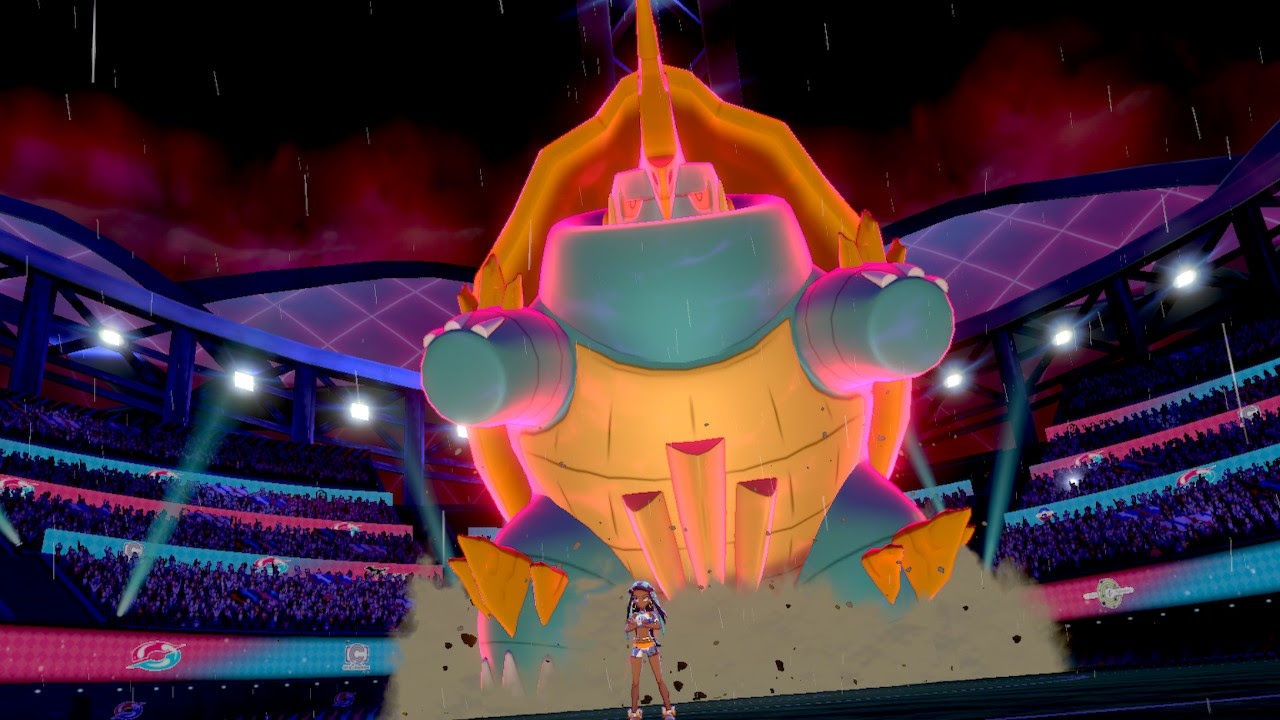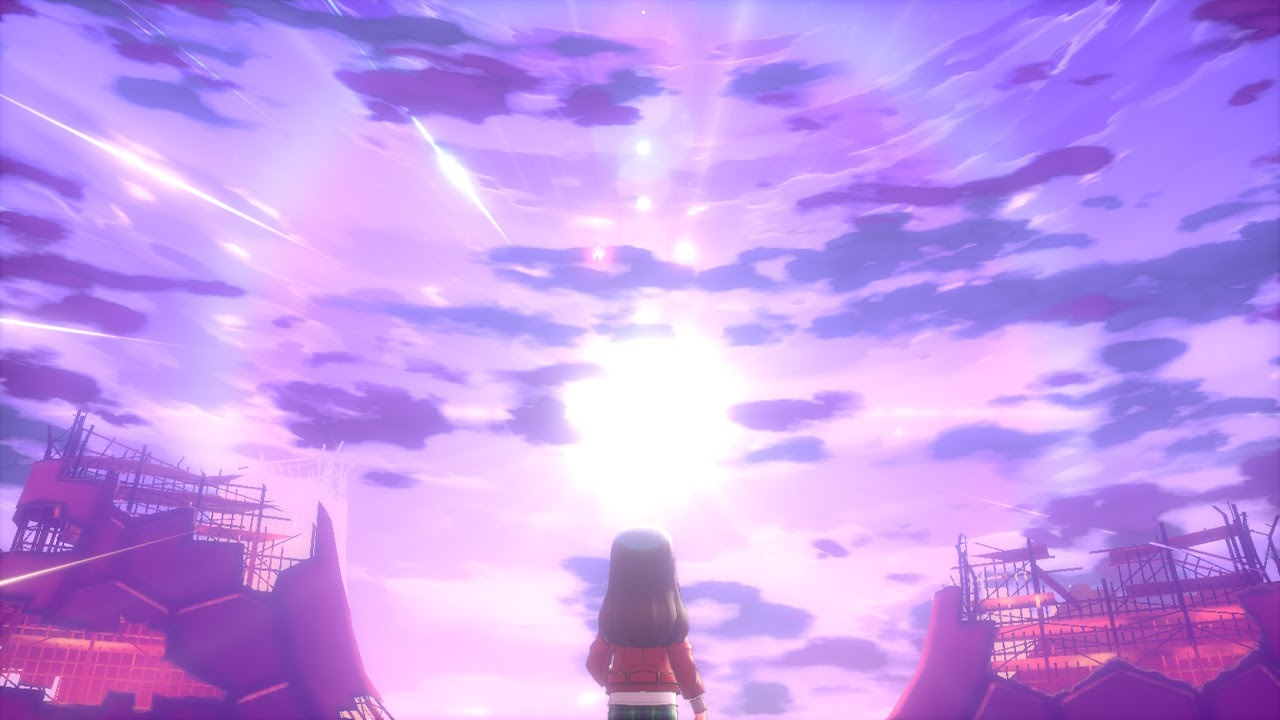Review: Pokémon Sword and Shield
For Tsareena and Country

Pokémon has moved forward several half-assed steps at a time, and that’s not a criticism. The series has existed comfortably in its own bubble and where other games would get lambasted for looking inward, Pokémon has thrived on reiteration and the slow crawl of minor innovations to the template. Pokémon games primarily get compared to other Pokémon games and no one expects the series to change drastically from its rock-solid fundamentals after so many years. Even as people forget weird features like poffins and Pokémon Musicals, they can take solace in the notion that even the jankiest gimmicks all work towards crafting the definitive Pokémon game, whatever that might look like in the future. Well, that future died with the announcement that Sword and Shield would mark the end of the full Pokémon roster and we would all need to leave the old “gotta catch ‘em all” mantra in the past.
I.
Pokémon Sword and Shield is the eighth generation in the mainline series of games and the first to appear on home console. It’s set in the Galar region, a place inspired by the art director’s experiences as a youth growing up in the United Kingdom. Players assume the role of a silent protagonist chasing the dream to become the Pokémon Champion, a lofty goal that is pursued with much more fervor by the player’s rival, a perennial loser named Hop who is also the current champion’s younger brother. In my mind, the player character I created, a young Pokémon trainer named Tomoyo, has lived the entirety of her life stuck in this one-Pokémon Center town knowing nothing more about the world other than what’s filtered down to her through Hop’s experiences in the comforting shade of the champion’s cape. Her growth into a person with her own story to tell spurred me on to leave home but unfortunately Hop won’t be shaken off so easily.

Even as Hop is vaunted as a formidable rival, he crumbles within seconds of any given Pokémon match against the player character and typically loses to other mid-card trainers off-camera. Loser rivals have become a staple of the series ever since Game Freak decided to let players hold type advantage over the rival’s starter Pokémon a few generations ago. For the most part, this hasn’t been a problem as balanced team-building has to grow from the initial Grass-Fire-Water triangle of effectiveness. The purpose of the rival has always been to test the player’s progress against what’s to come, gating off high-level areas until the player proves they’re capable. Hop’s path toward the Gym Challenge Finals is tightly woven with the player’s own journey and while I welcome the idea of a rival/ally having greater involvement in the storyline, Hop simply sucks at Pokémon for the longest time. And here’s the kicker to all this: everyone in Galar sucks at Pokémon.
II.
When people claim that Pokémon is “easy” and offers “zero challenge,” they tend to forget that they come in armed with a huge advantage of prior knowledge of the mechanics. By design, the player is meant to become the Pokémon Champion and there are no alternate routes to some other final destiny. That said, Sword and Shield puts up a considerably weaker fight than its predecessors. You never get the impression that the trainers are trying at all to compete and the Routes between towns are now more than ever a vestige of environment design better suited to the capabilities of the classic Game Boy. Galar’s layout evokes memories of theme parks and my quick, unimpeded dominance of the region made me feel less like a champion and more like an asshole ruining the illusion for the rest of the patrons.

Separate from Galar’s underwhelming Routes, the Wild Area received a lot of buzz when it was first unveiled and to be fair, it’s the most exciting part of the game despite its flaws. The diversity of the wild Pokémon encounters more than makes up for lame trainer battles. It’s never more apparent that certain conventions are dead and gone than when running into high-level final evolutions of Pokémon that have never appeared in the wild before. In the past, wild Pokémon were more of a nuisance than anything, hardly worth the time spent inputting the commands for an easy one-hit knockout. Along with the variety present from field to field, many of Sword and Shield’s wild Pokémon also give juicy experience points, frequently outleveling the trainers present in the immediate area. The delicate level curve of the game is easily broken as a result of meandering through the Wild Area for too long but it’s still a welcome change of pace to decades of grinding trash mobs.
Players that think too hard will look at the Routes, then at the Wild Area, and will then ask themselves why the developers didn’t just design travel around the more gratifying open world environment. The issue is that the Wild Area doesn’t have that Breath of the Wild butteriness to it, perhaps an unfair comparison considering BotW wasn’t connecting to hundreds of other players at all times. Wild Area performance takes a huge blow while online even with the console docked and although chop is reduced if a player disconnects from the internet, that defeats the purpose of the lively community feel of the Wild Area. Given how erratic the Wild Area renders under the strain of weather conditions and online connectivity, I see it more as a fun experiment than the cornerstone of Sword and Shield’s design. It shows that Game Freak is at least attempting to evolve and it’s unfortunate that the shrinking Pokédex became the symbol of change when the Wild Area is the best new idea the studio has had in years.
III.
The region of Galar is dominated by the influence of one benevolent businessman named Chairman Rose who has sculpted the culture of competitive Pokémon battles around Dynamax, a Galar exclusive phenomenon in which Pokémon get really, really big. Stadiums are built on top of “power spots” that allow Pokémon to Dynamax for the entertainment of the crowds, building up matches as a festival occasion on top of being a legitimate sport. As nice as it is to have the gyms back, this aspect of the game hasn’t grown much at all despite how they dress it up.


Even once you catch a whiff of the true nature of Dynamaxing and strange instances of Pokémon going berserk, the game is dismissively patronizing about keeping players focused on their regular journey, with characters insisting that the Gym Challenge is more important than giant Pokémon running amok in the stadiums. This subplot eventually does come to the forefront at the worst possible moment and by this point, solving the crisis that’s about to unfold has zero momentum compared to the Pokémon League. The whole farce regarding the dark omen threatening Galar wraps up as soon as it’s introduced, making me wonder why the game even bothers raising the stakes to some world-ending catastrophe if it’s compressed into a handful of battles.
For all the emphasis placed on Dynamax, the battle feature is one of the more underwhelming gimmicks in a series that’s full of them. The story explains that its use is anchored to locations featuring power spots, isolating it to stadiums and raids in the Wild Area. Despite the showy nature of the effect, it’s never utilized in any meaningful way in battle and it only takes a couple of fights to see the full extent of what the system has to offer. So long as a player can survive three Dynamax moves, the threat of actually wiping out in a Gym Leader match will have more to do with type disadvantages than the power of Dynamax. The max raids against wild Dynamax Pokémon are far more challenging than what you’ll see against trainers and the rewards from the raids are stupid good, so the gimmick isn’t entirely a worthless feature. Still, it doesn’t clear the air of this idea that Dynamax wasn’t worth the trouble.
IV.
Held up to the light at any angle, Sword and Shield is marred with flaws, but I still wouldn’t want to go back to the early generations after experiencing Pokémon on the Switch. The story is an absolute shambles but if your game is to raise, train, and tinker for the perfect critter, Sword and Shield is a considerable step up from the 3DS era’s mature metagame functionality. Untold millions of hours will be saved as a result of cutting out so much of the bullshit regarding stats, natures, and leveling. The interface is clean and responsive, controls can be set to play with a single joy-con, and the decision to give players almost-unlimited access to their Box storage is a lifesaver when it comes to breeding and farming Pokémon eggs. People that approach Pokémon at the surface level will see the same game they’ve been playing for years but the maniacs that put in the time and effort to hunt for shiny Pokémon or train for competitions will be grateful at how much the process has been streamlined.

I finished the main story at about 30 hours with a third of that time spent either going out for detours or idling to prepare coffee. The main game isn’t much longer or shorter than the past couple of Pokémon games but the scarcity of unique things to do after the credits roll is somewhat insulting. “No postgame” is an exaggeration but “minimal postgame” would be hard to argue. I can’t blame people for feeling cheated with the first $60 console Pokémon game having a single post-game quest to capture the box art legendary and no other high-priority content outside of the meta. Going back to pick up missed items and face trainers in rematches isn’t nearly as compelling as uncovering secrets after becoming Champion, especially if you have no interest in playing past catching rare Pokémon. I took myself past the 75-hour mark to complete my Pokédex and as fulfilling as it was for me, I wouldn’t claim that it’s a significantly worthwhile endeavor for the average player. By comparison, Ultra Sun and Ultra Moon had its own post-game quest, an extensive roster of legendaries to hunt down, and yeah, full support of all Pokémon going back to Ruby and Sapphire for GBA. Whatever the reasons might be, Sword and Shield has a very definitive end to its adventure that comes all too soon.

V.
For all the controversy in the lead-up, Sword and Shield ended up being more than a little OK, if not a messy success that could still be better. The future of the series will be challenging as long as Game Freak commits to the idea of rotating Pokémon in and out of the main games, guaranteeing that the next game will have limited compatibility with this generation out of the box. Nintendo and co. took a calculated risk with Sword and Shield and now that the games have sold a verified and very real One Billion copies at retail, they can reasonably infer that they won’t have to bend to the will of a few thousand rowdy fans clamoring for a return to the old ways. They have a healthy base of players comprised of casuals who don’t give a shit about Dexit, newer fans that aren’t too miffed about leaving the 3DS games behind, and folks who just like Pokémon too much to complain too loudly. I found my own enjoyment in Sword and Shield, but I’m also not rushing to post #thankyougamefreak without seeing the shape of Pokémon to come. You don’t have to like it, but odds are you already paid for it.
